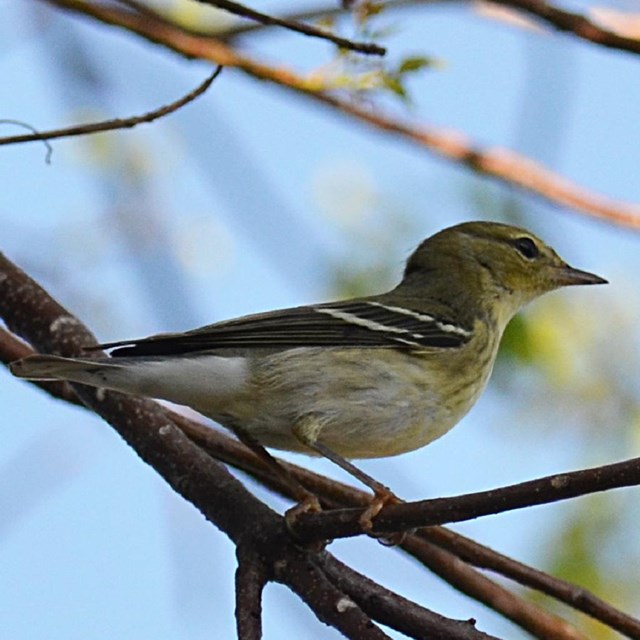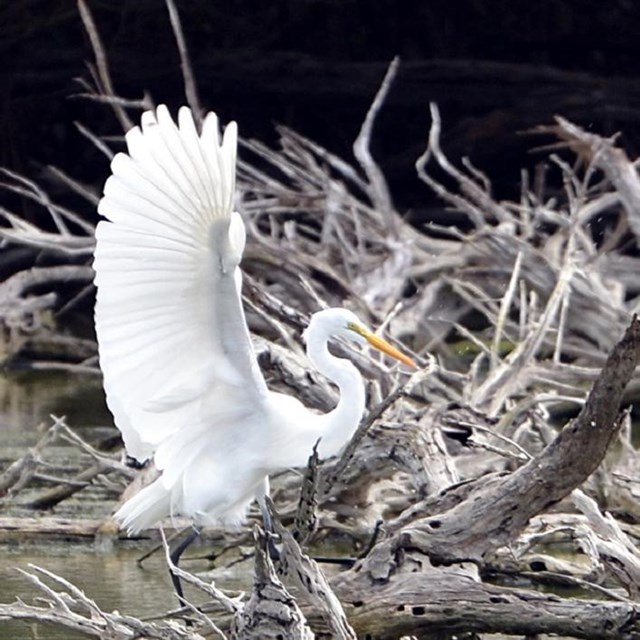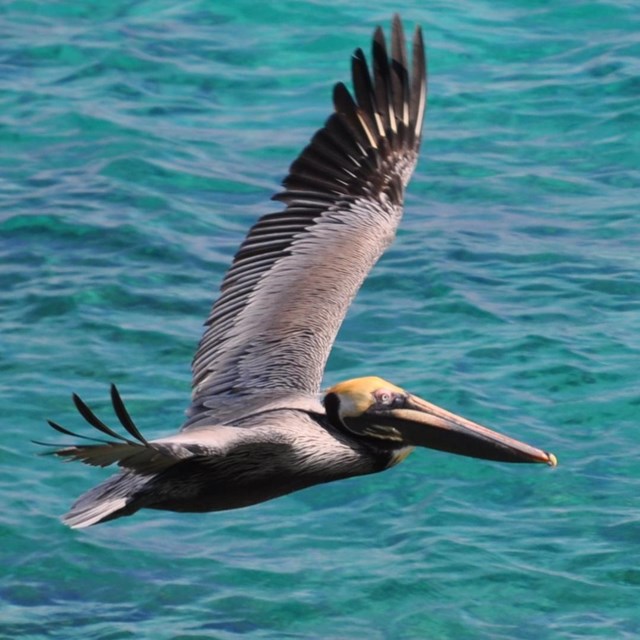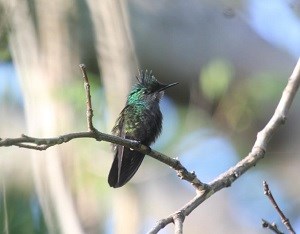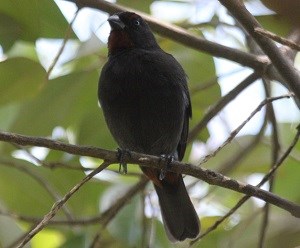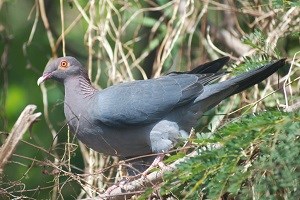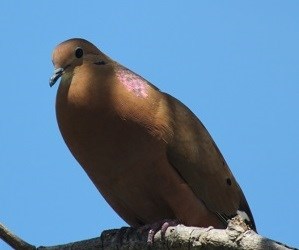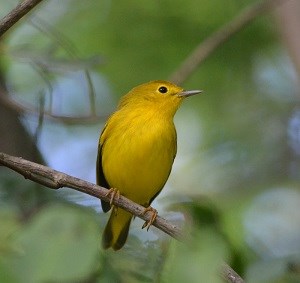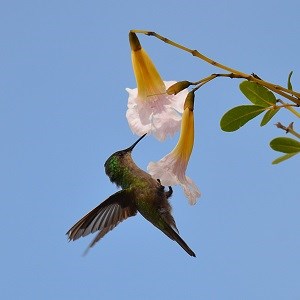
Antillean-crested Hummingbird (Orthohyncus cristatus)The Antillean-crested hummingbird range includes the Lesser Antilles, Virgin Islands and Puerto Rico. It is the smallest of the Virgin Island hummingbirds. It is one of the few hummingbirds with a crest, although the female has a much smaller crest.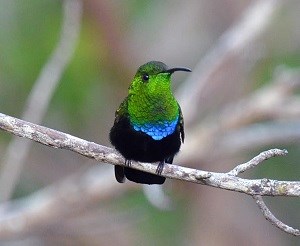
Green-throated Carib (Eulampis holosericeus)Green-throated Carib is the larger of the two resident Virgin Island hummingbirds. It is an important pollinator for the flowering plants. Found on Puerto Rico and in the Lesser Antilles, they are common throughout St. John and the Virgin Islands. They are distinguished by their green throat and brilliant blue breast and black chest.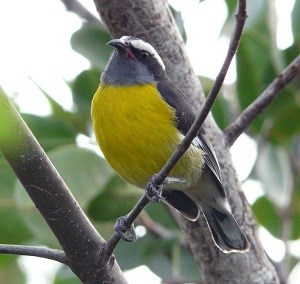
Bananaquit (Coereba flaveola)The official bird of the Virgin Islands is found throughout the West Indies. They favor shrubbery, forest borders, open areas and gardens. Recognized by their white throat, yellow belly and rump and bold white stripe over the eyes they have black feet and legs with a gray-black upper body. Interesting Fact: The female builds a nest with a side entrance hole. She sometimes builds several and sleeps in one.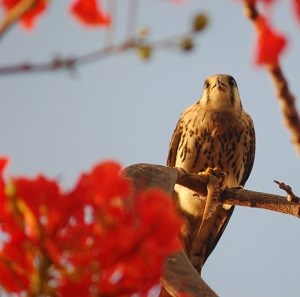
American Kestrel (Falco sparverius)The American kestrel, North America's smallest falcon, is often seen gliding over St. John hillsides and hovering over brushy fields scanning for prey. Here in the Virgin Islands they are known as "killy-killy." These little falcons are proficient hunters, and they feed on insects, small rodents and the numerous lizards that occur here.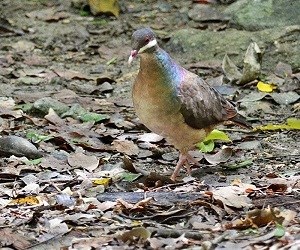
Bridled Quail Dove (Geotrygon mystaceaIt is found in Puerto Rico, Virgin Islands and some of the Lesser Antilles. Known locally as a wood Hen, this shy medium-size dove can be found in subtropical or tropical dry forests. It has an olive-brown upper body with blue-green iridescence on its crown, forehead, and upper neck, a distinct white stripe just under the eyes, and a two-toned bill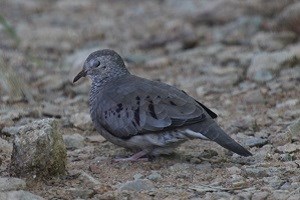
Common Ground-Dove (Columbina passerina)These tiny doves are found throughout the southernmost parts of the U.S. and northern areas of South America. They are dark sandy-brown with large dark spots on the wings. Males have a pinkish wash on the head, neck and chest with bluish crowns. Both male and female have pinkish-red bills with dark tips.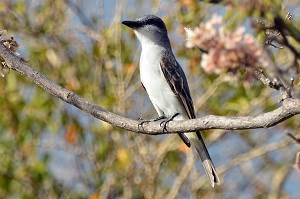
Gray Kingbird (Tyrannus dominicensis)Gray kingbirds are at home among mangrove swamps of south Florida and the Caribbean. This prolific flycatcher can be found in trees shrubs throughout the island. They have gray upper bodies with brownish wings and tail. The under body is white with a gray tinge. They have a yellow crown stripe, and a dusky mask through the eyes. Their call is long and rolling "pipiri pipiri."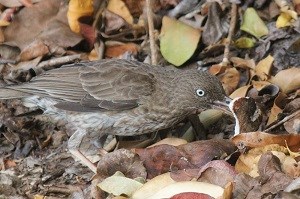
Pearly-eyed Thrasher (Margarops fuscatus)The thrasher is extremely bold and threatens other species entering their nesting area, including NPS workers. These mockingbird relatives are prolific breeders. They are very vocal and can be heard singing throughout the night during a full moon. On St. John, they are often also called thrusie.They are found in Puerto Rico, Virgin Islands and some of the Lesser Antilles islands.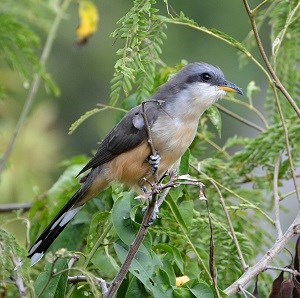
Mangrove Cuckoo (Coccyzus minor)The mangrove cuckoo has a black ear patch, buff colored abdomen with a long tail, and downward curved bill. Despite its name, it is actually more commonly found in the dry tropical forest. This secretive bird is more likely to be heard than seen as it has a thick, throaty "gah-gah-gah" call. It has amazing eyesight, which it uses to catch walking sticks, leafhoppers, and caterpillars.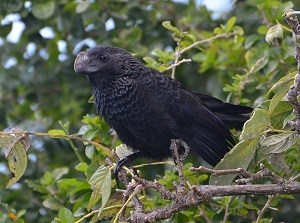
Smooth-billed Ani (Crotophaga ani)The ani, a member of the cuckoo family, is all black, has a long tail and a parrot-like bill and is locally known as the "black witch." It has a loud squawky call sometimes described as "wei-ik". Anis are often seen in flocks of 5-12 birds as they glide from one point to another.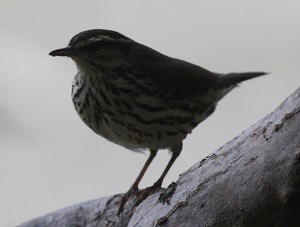
Northern Waterthrush (Parkesia noveboracensis)The northern waterthrush is a small songbird that breeds in North America and migrates to the Caribbean and South America for the winter season. This brownish bird with speckled throat and whitish eye stripe, is actually a warbler. |
Last updated: October 28, 2021

